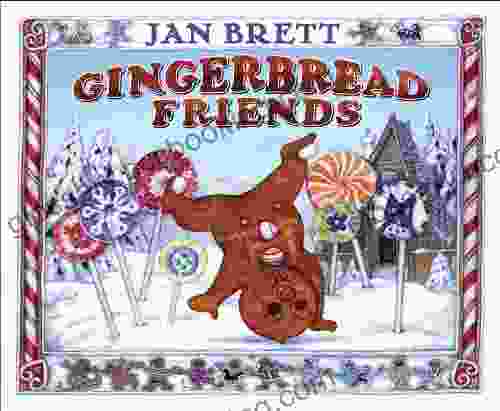Unveiling the Collaborative Problem Solving Approach: Revolutionizing Behavioral Treatment for Explosive Kids

The world of parenting presents countless challenges, but for parents grappling with explosive kids, these challenges often escalate into relentless battles.
Explosive kids may exhibit extreme tantrums, violent behavior, and an inability to control their emotions. Traditional discipline methods often prove ineffective, leaving parents feeling overwhelmed, frustrated, and helpless.
4.5 out of 5
| Language | : | English |
| File size | : | 2444 KB |
| Text-to-Speech | : | Enabled |
| Screen Reader | : | Supported |
| Enhanced typesetting | : | Enabled |
| Word Wise | : | Enabled |
| Print length | : | 257 pages |
Enter the Collaborative Problem Solving (CPS) approach, a groundbreaking methodology that transforms the way we understand and treat explosive kids.
What is the Collaborative Problem Solving Approach?
Developed by Dr. Ross W. Greene, CPS recognizes that explosive behavior is not a willful act of defiance. Instead, it stems from underlying emotional and cognitive challenges that make it difficult for these children to regulate their emotions effectively.
The CPS approach emphasizes collaboration between the child, parents, and other caregivers. Instead of relying on punishment or control, CPS focuses on understanding the child's perspective and working together to develop strategies that address their emotional needs.
The Four Steps of Collaborative Problem Solving
CPS follows a four-step process:
1. Active Listening
The first step is to engage in active listening. This involves listening attentively to the child's perspective, without judgment or interruption. The goal is to understand the child's underlying emotions and needs.
2. Identifying the Problem
Once the child's perspective is understood, the next step is to identify the problem together. This is not about assigning blame but rather about collaboratively defining the issue that needs to be addressed.
3. Developing Solutions
The third step is to develop solutions. This involves brainstorming a variety of possible solutions and working together to select the options that are most likely to be effective and respectful of the child's needs.
4. Implementation and Evaluation
Finally, the CPS approach emphasizes implementation and evaluation. The child and caregivers work together to implement the selected solutions and track their progress. Regular check-ins allow for adjustments as needed to ensure that the solutions are effective and sustainable.
Benefits of Collaborative Problem Solving
The CPS approach offers numerous benefits for explosive kids and their families:
1. Improved Behavior
CPS has been shown to significantly reduce explosive behavior, aggression, and other challenging behaviors.
2. Enhanced Emotional Regulation
Through active listening and collaborative problem-solving, children learn to identify and manage their emotions more effectively.
3. Stronger Family Bonds
CPS fosters collaboration and communication within families, leading to stronger bonds and a more positive home environment.
4. Empowerment of Children
CPS empowers children by giving them a voice and involving them in the decision-making process.
Implementing the Collaborative Problem Solving Approach
Implementing CPS can be challenging, but it is well worth the effort. Here are some tips for getting started:
1. Seek Professional Guidance
Consider seeking guidance from a therapist or counselor trained in CPS. They can provide support and guidance throughout the process.
2. Start Small
Begin by focusing on small problems that are manageable for both the child and the caregivers.
3. Be Patient and Consistent
CPS takes time and consistency. Be patient and don't give up if you don't see results immediately.
4. Empower the Child
Give the child a sense of ownership by involving them in every step of the process.
5. Celebrate Successes
Acknowledge and celebrate both small and big successes. This will help motivate the child and caregivers to continue with the process.
The Collaborative Problem Solving approach is a revolutionary treatment for explosive kids. By empowering children, fostering collaboration, and addressing underlying emotional needs, CPS provides a path to improved behavior, stronger family bonds, and a more fulfilling life for all involved.
If you are struggling with an explosive child, do not hesitate to seek help. The CPS approach can transform your family's life, providing hope and a roadmap for lasting change.
4.5 out of 5
| Language | : | English |
| File size | : | 2444 KB |
| Text-to-Speech | : | Enabled |
| Screen Reader | : | Supported |
| Enhanced typesetting | : | Enabled |
| Word Wise | : | Enabled |
| Print length | : | 257 pages |
Do you want to contribute by writing guest posts on this blog?
Please contact us and send us a resume of previous articles that you have written.
 Book
Book Novel
Novel Page
Page Chapter
Chapter Text
Text Story
Story Genre
Genre Reader
Reader Library
Library Paperback
Paperback E-book
E-book Magazine
Magazine Newspaper
Newspaper Paragraph
Paragraph Sentence
Sentence Bookmark
Bookmark Shelf
Shelf Glossary
Glossary Bibliography
Bibliography Foreword
Foreword Preface
Preface Synopsis
Synopsis Annotation
Annotation Footnote
Footnote Manuscript
Manuscript Scroll
Scroll Codex
Codex Tome
Tome Bestseller
Bestseller Classics
Classics Library card
Library card Narrative
Narrative Biography
Biography Autobiography
Autobiography Memoir
Memoir Reference
Reference Encyclopedia
Encyclopedia James O Youngcliff
James O Youngcliff Kelly Parker
Kelly Parker Mark Falcoff
Mark Falcoff Steve Parker
Steve Parker Kathleen Cushman
Kathleen Cushman Jacqueline Miller
Jacqueline Miller Jen Senko
Jen Senko James Alexander Currie
James Alexander Currie James Stevens Arce
James Stevens Arce Rodrigo Fonseca
Rodrigo Fonseca Jack Hanna
Jack Hanna Jack Newman
Jack Newman Ryan Patrick Hanley
Ryan Patrick Hanley John Baldwin
John Baldwin Jacklyn Williams
Jacklyn Williams Seth Greene
Seth Greene James F Mckenzie
James F Mckenzie Jackie Hance
Jackie Hance James Segrest
James Segrest James Meyers
James Meyers
Light bulbAdvertise smarter! Our strategic ad space ensures maximum exposure. Reserve your spot today!
 Alexandre DumasFollow ·4.5k
Alexandre DumasFollow ·4.5k Aleksandr PushkinFollow ·4.4k
Aleksandr PushkinFollow ·4.4k David MitchellFollow ·6.9k
David MitchellFollow ·6.9k Ibrahim BlairFollow ·12k
Ibrahim BlairFollow ·12k Ethan MitchellFollow ·8k
Ethan MitchellFollow ·8k Henry Wadsworth LongfellowFollow ·11k
Henry Wadsworth LongfellowFollow ·11k Chandler WardFollow ·7.4k
Chandler WardFollow ·7.4k Dan BrownFollow ·2.5k
Dan BrownFollow ·2.5k

 Douglas Adams
Douglas AdamsGingerbread Friends by Jan Brett
A Magical Tale for the Holidays Jan Brett's...

 Joseph Foster
Joseph FosterHappy Birthday Moo Moo Family: A Delightful Tale for Kids...
Celebrate the Bonds of Family with...

 Demetrius Carter
Demetrius CarterUncover the Enchanting Tapestry of New Delhi: A Visual...
New Delhi, India's vibrant capital, is a...

 W.B. Yeats
W.B. YeatsUnveiling the Power of Lean UX: A Comprehensive Review of...
In the rapidly evolving world...
4.5 out of 5
| Language | : | English |
| File size | : | 2444 KB |
| Text-to-Speech | : | Enabled |
| Screen Reader | : | Supported |
| Enhanced typesetting | : | Enabled |
| Word Wise | : | Enabled |
| Print length | : | 257 pages |
















